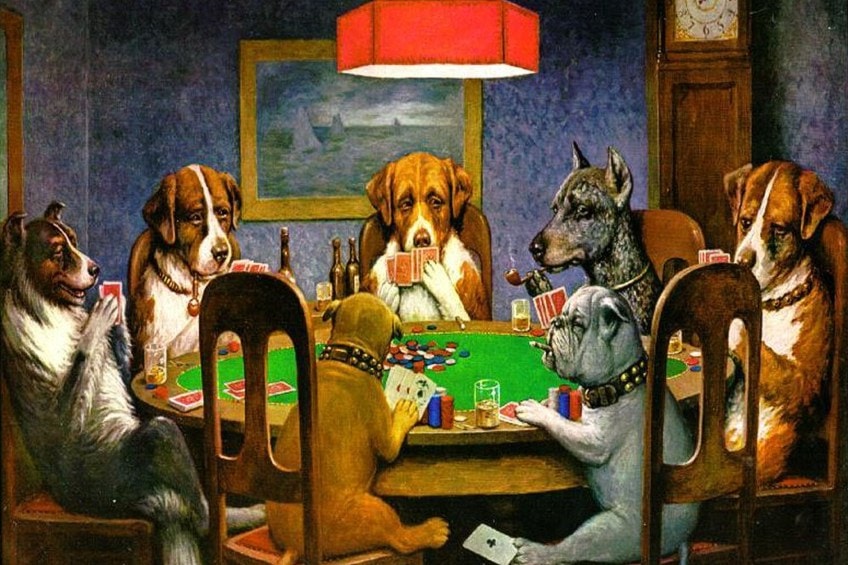Gambling has always interested people, regardless of the era in history.
Cards and roulette are popular games through the ages. If earlier sessions were held in special gambling houses, now with the help of the online casino https://onlinecasinozonder.nl/ – a site with entertainment, it is possible to play on any device (PC or handheld gadget) and at any time of the day. Also, gamers in a virtual institution have a greater choice of opponents than before: against the computer, other participants in tournaments or betting with “live” dealers.
So, gambling was constantly developing along with the community, and this is also reflected in the art, in particular – in the paintings of cultural figures of different centuries!
Paintings by famous artists painted in oil paints are the authors’ view of the gambling process itself in the XVI-XX centuries:
“Dogs Playing Poker”, a satirical series of paintings produced by Cassius Marcellus Coolidge from 1903, designed to mock high society and their excesses.
The comic images present anthropomorphic characters with interesting plots: “Bold Bluff,” “Waterloo,” “Poker. Sympathy” (in the center of the plot is a player who lost with four aces in his hands to another opponent with a diamond Street Flush from 2 to 6), “Arrested with four aces” (police in an underground casino), “Visiting a sick friend” (unexpected visit from wives), etc. The American artist used oil paints and worked in the genres of animalism and kitsch. The paintings quickly became popular, and later the images spread in the form of reproductions: cups, deck of cards, calendars, etc.
Paul Cézanne The Card Players is a series of five of the greatest paintings from the French painter (1890-1895).
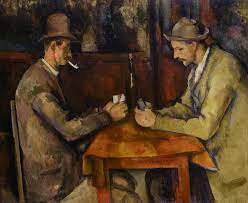
The models on the canvases are serfs from the author’s estate, and great attention is paid to the plasticity of the characters, their manner of sitting at the table, and their clothes. Each work has different characters, the cards on the canvases are almost invisible, and there is no money on the tables, so there is an assumption that the characters are playing gin, but it is not certain. The characters are fully immersed in the game, do not take their eyes off their cards – a representative of post-impressionism managed to convey their calmness and ease. The famous paintings are painted on canvases with oil paints. The canvas served as inspiration for the series “Dogs Playing Poker”.
Edward Munch “Behind the Roulette Wheel in Monte Carlo” (1892).
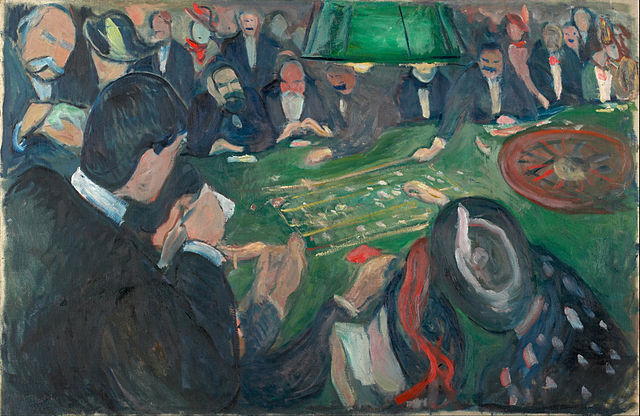
The expressionist painter depicted the painting in gloomy tones and without clearly drawn faces, because the center of the plot is not the dealer with the players, but the roulette! Also, the color scheme and placement of the elements is not accidental, but a successful way to convey the tension of gambling. Munch was an avid gambler and confessed that he was struck by the variety of colors in the casino, which he conveyed on the canvas. Even more interesting is that the painting also features the artist himself, who sought to unravel the secrets of winning at roulette, but in the end got too carried away and lost all his money. His work is an admiration for the game and a desire to warn against the dangers of excessive gambling.
Michelangelo Merisi da Caravaggio’s The Cheaters (1594).
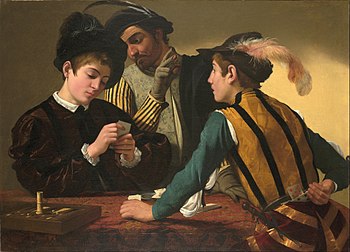
The author is the founder of realism in painting and the greatest representative of baroque. The composition is built in a conditional triangle: the compact placement of the three representatives of the nobility, as well as the table and other objects on the surface – does not scatter the attention of the beholder and allows you to consider all the elements on the canvas. The painting depicts two young men playing cards: one of them is looking at the deck and thinking about his move, while the other is a cheat, who has hidden the cards behind his belt – this is visible to contemplators, but not to the honest young man. The cheater’s accomplice, a middle-aged man, looks at the cards and gestures to the dishonest player. On his gloves you can see the cut off scraps of cloth – for the convenience of probing the stolen cards. The artist expressed his good attitude towards the positive character with light colors and as if a ray of sunlight touches his face, while the anti-heroes, on the contrary, are in the shadows. The background of the painting is beige and there are few dark colors on the canvas – the author hints that the game should be treated more simply, without unnecessary drama.
Georges de Latour’s Deception with the Ace of clubs is a representation of how cheating used to be done in card games.
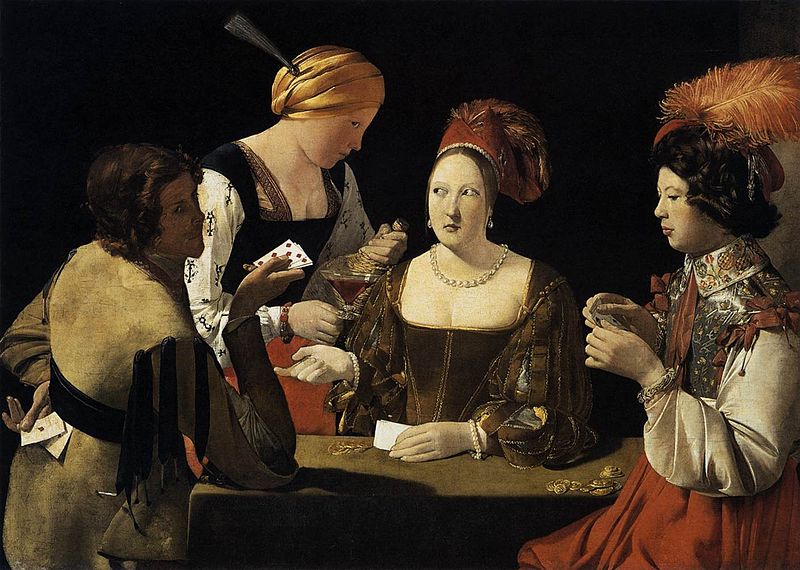
At first glance, it appears that there are simply three people (two men and a woman) and a maid who serves visitors to the gambling house sitting at the table. However, in fact, the lady is in cahoots with the cheat, who has hidden the cards and is prompting him with gestures and eye movements. The victim is a young man, 14 or 15 years old, dressed in expensive clothes, with scattered gold coins on the table next to him. He is probably the careless son of a rich man. Apart from the moral lesson in the subject, the Caravaggio painter paid much attention to the significance of the details: the pikes in the young man’s hands mean misfortune, the clubs in the cheater’s hands mean wealth, while the deep cleavage and the pearl adornments suggest that the lady is a courtesan, and the dark background adds extra tragedy. The work warns against underage gambling addiction and urges vigilance during card sessions.
Conclusion
The history of gambling is closely intertwined with art. Moreover, even the creators of beauty could not resist the temptation of gambling: to bet at the roulette table or try to win at card games.
The above pictures with meaning confirm that in the 15-17 centuries, as in modern times, were and are people who cheat opponents for easy and quick profits – such cheaters should always bypass the side.
And it is important not to forget to observe the rules of self-limitation (fixed time and bankroll) in order to enjoy the game process at online casinos without negative consequences, because it is better to observe cases of financial fraud only on the paintings of the greatest artists!
